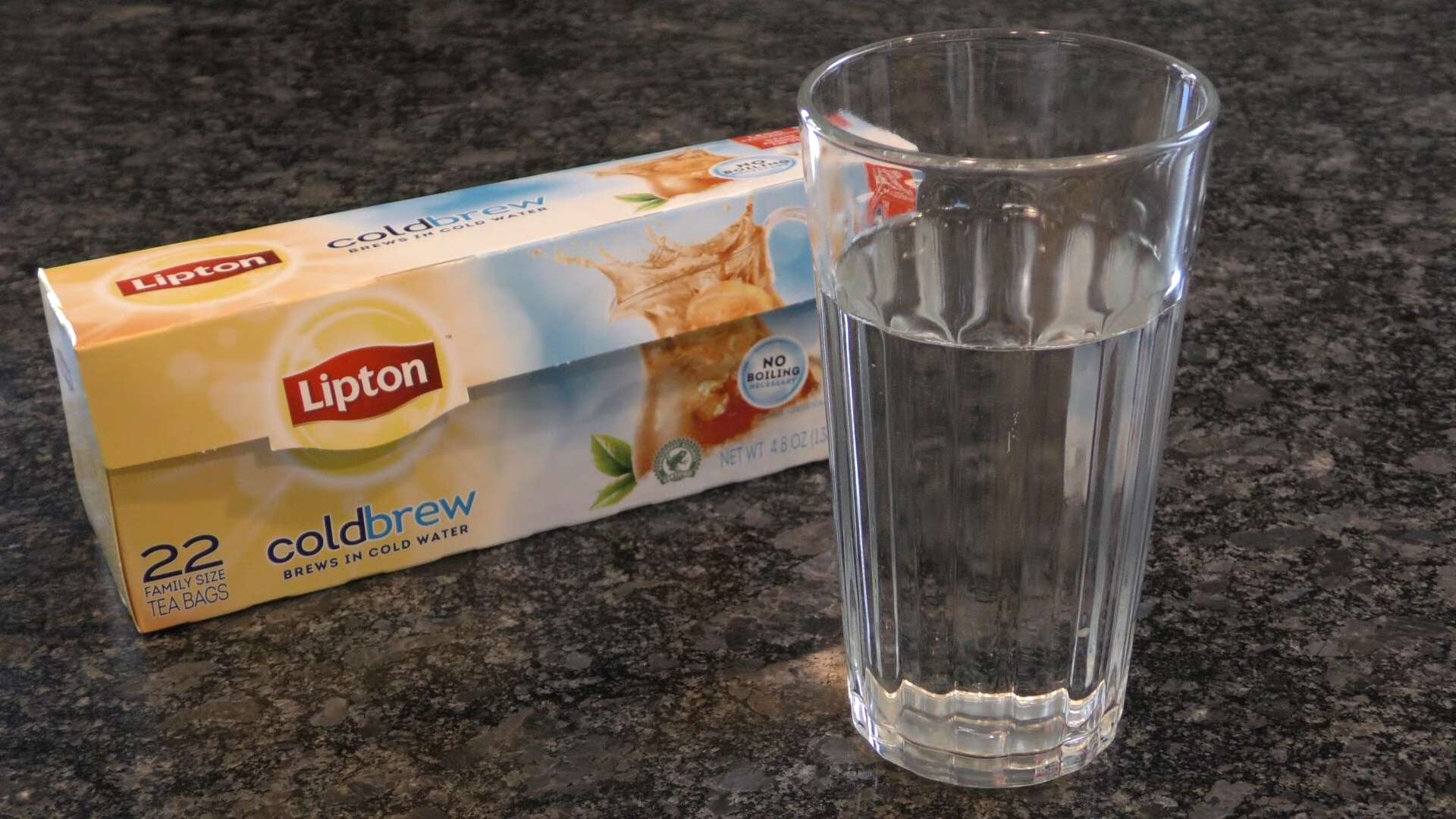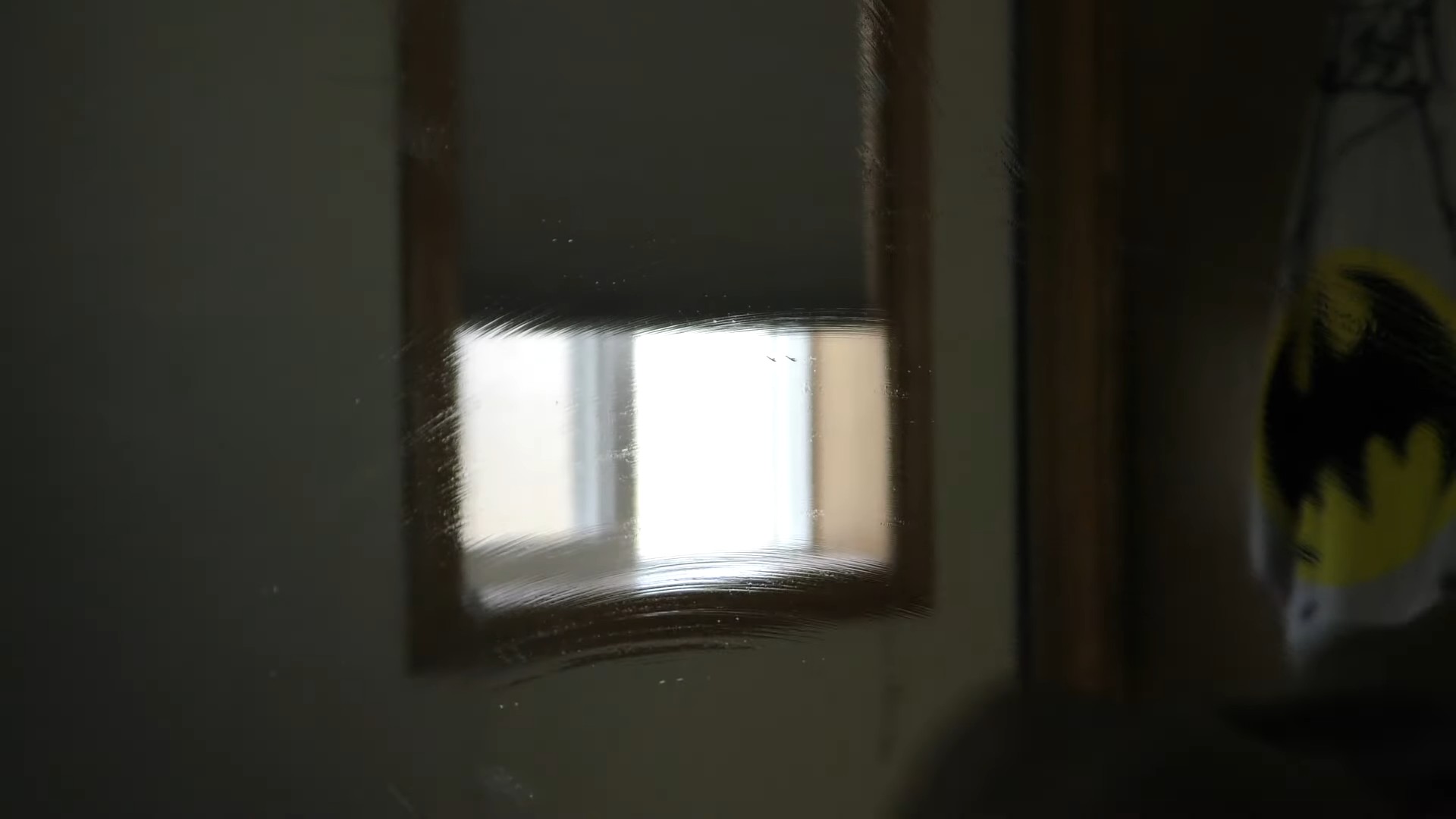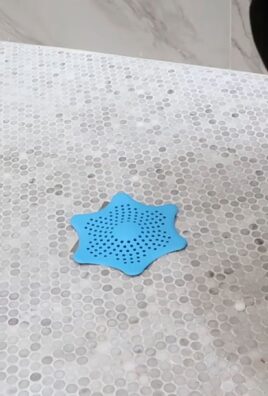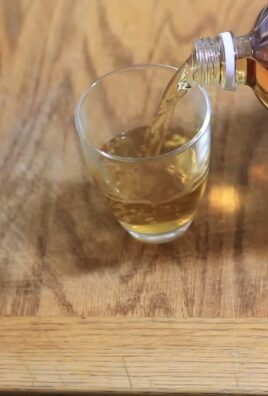Black tea home hacks are about to revolutionize your gardening game! Forget expensive fertilizers and complicated routines. I’m here to show you how a simple cup of black tea can be your secret weapon for a thriving garden.
Tea, in general, has a rich history, dating back thousands of years in Asian cultures, where it was valued not only for its beverage qualities but also for its medicinal and practical uses. While we often think of tea as something to sip, its benefits extend far beyond the teacup. Gardeners have quietly been using black tea for years, passing down tips and tricks through generations.
Why should you care about these black tea home hacks? Well, let’s face it, gardening can be tough! We all want lush, vibrant plants, but sometimes our efforts fall short. Maybe your soil is lacking nutrients, or perhaps you’re battling pesky fungal diseases. That’s where black tea comes in. It’s a natural, affordable, and incredibly effective way to boost your garden’s health. I’m excited to share these simple yet powerful techniques that will help you unlock the full potential of your plants, all while saving you money and reducing your reliance on chemical products. Get ready to brew up some gardening magic!

Unlock the Magic of Black Tea: DIY Hacks for Home & Beauty
Hey there, fellow DIY enthusiasts! I’m so excited to share some incredible hacks using something you probably already have in your pantry: black tea! Forget just sipping on it; black tea is a powerhouse ingredient for all sorts of home and beauty projects. I’ve been experimenting with these for a while now, and I’m thrilled to show you how to harness its amazing properties. Let’s dive in!
DIY Black Tea Hair Rinse for Shine & Darkening
Want to boost your hair’s shine and subtly darken it without harsh chemicals? Black tea is your answer! It’s a natural way to enhance your hair’s natural color, add luster, and even help with scalp health.
What you’ll need:
* 4-5 black tea bags (plain black tea, no added flavors)
* 2 cups of boiling water
* A bowl or container
* Spray bottle (optional, but recommended)
* Towel
Step-by-step instructions:
1. Brew a strong tea: Bring 2 cups of water to a boil. Place the black tea bags in a bowl or container and pour the boiling water over them. Let the tea steep for at least an hour, or even longer for a stronger color. The longer it steeps, the more potent the rinse will be. I usually let mine steep for a couple of hours.
2. Cool and strain: Once the tea has steeped, remove the tea bags. Make sure to squeeze out any excess liquid from the bags to get every last bit of goodness. Let the tea cool completely. You don’t want to pour hot tea on your head!
3. Prepare your hair: Shampoo and condition your hair as usual. Rinse thoroughly.
4. Apply the tea rinse: This is where the spray bottle comes in handy! Pour the cooled tea into a spray bottle for even distribution. If you don’t have a spray bottle, you can simply pour the tea over your hair, making sure to saturate all strands from root to tip.
5. Massage and wait: Gently massage the tea into your scalp for a few minutes. This helps stimulate blood flow and distribute the tea evenly. Let the tea sit on your hair for 10-30 minutes, depending on how much darkening you want. For a subtle change, 10 minutes is enough. For a more noticeable difference, go for 30 minutes.
6. Rinse (or don’t!): This is optional! For a more intense color, you can skip rinsing. Just towel-dry your hair and style as usual. However, if you’re worried about staining your clothes or bedding, or if you find the tea a bit sticky, rinse your hair with cool water.
7. Repeat as needed: You can repeat this rinse once or twice a week to maintain the color and shine.
Important Notes:
* Strand test: Before applying the tea rinse to your entire head, do a strand test on a small, hidden section of your hair to see how it reacts to the tea. This will help you avoid any unwanted surprises.
* Gray hair: Black tea can help blend gray hairs, but it won’t completely cover them. It will give them a more subtle, highlighted look.
* Light hair: If you have very light blonde or bleached hair, be cautious! Black tea can stain light hair, so start with a shorter processing time and do a strand test first.
* Tea type: Stick to plain black tea. Flavored teas may contain ingredients that could irritate your scalp or affect the color.
Black Tea Bags for Puffy Eyes & Dark Circles
Say goodbye to tired-looking eyes with this simple and effective hack! The caffeine and tannins in black tea can help reduce puffiness and dark circles.
What you’ll need:
* 2 black tea bags (again, plain black tea is best)
* Hot water
* A small plate or saucer
* A comfortable place to relax
Step-by-step instructions:
1. Brew the tea: Steep the black tea bags in hot water for 3-5 minutes.
2. Cool the tea bags: Remove the tea bags from the water and squeeze out any excess liquid. Let them cool down until they are warm, but not too hot to touch. You can even pop them in the refrigerator for a few minutes for an extra cooling effect.
3. Apply to your eyes: Lie down in a comfortable position and place the cooled tea bags over your closed eyelids.
4. Relax and enjoy: Leave the tea bags on your eyes for 15-20 minutes. Relax and let the tea work its magic.
5. Remove and rinse: Gently remove the tea bags and rinse your face with cool water.
Why this works:
* Caffeine: Caffeine helps constrict blood vessels, which can reduce puffiness and inflammation.
* Tannins: Tannins are antioxidants that can help tighten the skin and reduce the appearance of dark circles.
Tips for best results:
* Use this treatment regularly, a few times a week, for best results.
* Make sure the tea bags are not too hot, as this could burn your delicate skin around your eyes.
* You can also use green tea bags for this treatment, as they also contain caffeine and tannins.
Black Tea as a Natural Cleaner & Deodorizer
Believe it or not, black tea can also be used as a natural cleaner and deodorizer around your home! Its tannins can help break down grease and grime, and its natural scent can help neutralize odors.
Cleaning Wood Furniture
What you’ll need:
* 2 black tea bags
* 2 cups of boiling water
* A clean, soft cloth
Step-by-step instructions:
1. Brew the tea: Steep the black tea bags in boiling water for 10-15 minutes.
2. Cool and strain: Remove the tea bags and let the tea cool completely.
3. Dampen the cloth: Dip the clean cloth into the cooled tea and wring out any excess liquid. The cloth should be damp, not soaking wet.
4. Wipe the furniture: Gently wipe down your wood furniture with the damp cloth.
5. Dry with a clean cloth: Use a clean, dry cloth to buff the furniture and remove any remaining tea residue.
Why this works:
* The tannins in black tea help remove dirt, dust, and grime from wood surfaces.
* The tea can also help restore the natural shine of the wood.
Important Notes:
* Always test the tea on a small, inconspicuous area of the furniture first to make sure it doesn’t damage the finish.
* Avoid using this method on unfinished wood, as the tea could stain it.
Deodorizing Carpets & Rugs
What you’ll need:
* Used black tea leaves (dried)
* A vacuum cleaner
Step-by-step instructions:
1. Collect used tea leaves: After brewing black tea, don’t throw away the tea leaves! Spread them out on a baking sheet and let them dry completely. This is crucial to prevent mold growth.
2. Sprinkle on the carpet: Once the tea leaves are dry, sprinkle them evenly over your carpet or rug.
3. Let it sit: Let the tea leaves sit on the carpet for about 30 minutes. This allows them to absorb any odors.
4. Vacuum: Vacuum up the tea leaves thoroughly.
Why this works:
* The tea leaves absorb odors and leave your carpet smelling fresh.
* This is a natural and eco-friendly alternative to chemical carpet deodorizers.
Tips for best results:
* Make sure the tea leaves are completely dry before sprinkling them on your carpet.
* If you have light-colored carpets, test the tea leaves on a small, hidden area first to make sure they don’t stain.
Black Tea for Sunburn Relief
Ouch, sunburn! Black tea can come to the rescue. The tannic acid in black tea acts as an astringent, helping to soothe and heal sunburned skin.
What you’ll need:
* 3-4 black tea bags
* Cool water
* A clean cloth or cotton balls
Step-by-step instructions:
1. Brew the tea: Steep the black tea bags in cool water for 10-15 minutes.
2. Cool and strain: Remove the tea bags and let the tea cool completely.
3. Apply to sunburned skin: Soak a clean cloth or cotton balls in the cooled tea and gently apply it to the sunburned areas.
4. Repeat as needed: Repeat this process several times a day until the sunburn starts to heal.
Why this works:
*

Conclusion
So, there you have it! Unlocking the potential of black tea goes far beyond just a comforting cuppa. We’ve explored how this humble beverage can be transformed into a powerful and versatile tool for various home hacks. From revitalizing tired hair to banishing stubborn stains and even nurturing your garden, the possibilities are truly remarkable.
Why is this DIY approach a must-try? Because it’s economical, eco-friendly, and surprisingly effective. Instead of reaching for harsh chemicals or expensive specialized products, you can harness the natural power of black tea, a readily available and often overlooked resource. Think about the money you’ll save, the reduced environmental impact, and the satisfaction of creating something useful from something you might otherwise discard.
But the beauty of these black tea home hacks lies in their adaptability. Feel free to experiment and tailor them to your specific needs and preferences.
* **For hair:** Try adding a few drops of essential oil, like rosemary or lavender, to your black tea rinse for an extra boost of fragrance and therapeutic benefits. You can also adjust the strength of the tea depending on your hair color; darker hair can handle a stronger brew, while lighter hair might benefit from a weaker infusion.
* **For cleaning:** Consider adding a squeeze of lemon juice to your black tea cleaning solution for extra degreasing power and a fresh scent. For tougher stains, let the tea soak for a longer period before scrubbing.
* **For gardening:** Experiment with different concentrations of black tea fertilizer to find what works best for your plants. Some plants, like ferns and acid-loving plants, will thrive with a stronger tea solution, while others might prefer a more diluted version. You can also use cooled tea bags directly as mulch around your plants.
We’ve only scratched the surface of what’s possible with black tea. The key is to be creative, resourceful, and willing to experiment. These hacks are not only practical but also a fun way to connect with the natural world and discover the hidden potential of everyday ingredients.
So, what are you waiting for? Brew a pot of black tea, enjoy a relaxing cup, and then put the rest to work! We’re confident that you’ll be amazed by the results. Don’t just take our word for it; try these **black tea home hacks** yourself and see the difference they can make.
We’re eager to hear about your experiences! Share your successes, your failures, and any variations you discover in the comments below. Let’s build a community of black tea enthusiasts and unlock even more of its hidden potential together. Your insights could help others discover new and innovative ways to use this amazing beverage. Let us know which hack worked best for you, or if you have any other creative uses for black tea that we haven’t mentioned. We can all learn from each other!
Frequently Asked Questions (FAQ)
What kind of black tea is best for these hacks?
Generally, any type of black tea will work for these home hacks. However, plain black tea without added flavors or ingredients is preferable. Avoid teas with artificial sweeteners or strong artificial flavors, as these could interfere with the desired results. A basic, inexpensive black tea is perfectly suitable and often the most cost-effective option. Loose leaf or tea bags are both fine; just ensure you’re using pure black tea. Stronger teas, like Assam or English Breakfast, might provide more potent results due to their higher tannin content, but milder options like Darjeeling will also work.
How long does the black tea need to steep for these hacks?
The steeping time depends on the specific application. For hair rinses and cleaning solutions, a longer steeping time (15-20 minutes) is recommended to extract more tannins and beneficial compounds. For gardening, a shorter steeping time (5-10 minutes) might be sufficient, as you don’t want an overly concentrated solution. Always allow the tea to cool completely before using it for any application. Remember that the longer the steeping time, the stronger the tea will be, so adjust accordingly based on your needs and the type of black tea you’re using.
Can I reuse the tea bags after making a cup of tea?
Yes, absolutely! Reusing tea bags is a great way to maximize their potential and reduce waste. Even after brewing a cup of tea, the tea bags still contain beneficial compounds that can be used for these home hacks. Simply collect the used tea bags, let them cool, and then use them as directed in the instructions. For example, you can place cooled tea bags directly on minor burns or sunburns for soothing relief, or use them as a gentle exfoliant for your skin. Reusing tea bags is an eco-friendly and economical way to get the most out of your black tea.
Are there any risks associated with using black tea for these hacks?
While black tea is generally safe, there are a few precautions to keep in mind. Always test a small area first before applying black tea to your hair or skin, especially if you have sensitive skin or allergies. Black tea can stain certain surfaces, so be careful when using it for cleaning and avoid contact with light-colored fabrics or porous materials. When using black tea in the garden, start with a diluted solution and monitor your plants for any signs of distress. If you experience any adverse reactions, discontinue use immediately. As with any DIY remedy, it’s always best to err on the side of caution and consult with a professional if you have any concerns.
How often can I use black tea for hair rinses?
The frequency of black tea hair rinses depends on your hair type and desired results. For most hair types, a black tea rinse once or twice a week is sufficient to add shine, darken hair color, and promote hair growth. However, if you have dry or brittle hair, you might want to reduce the frequency to once every two weeks to avoid over-drying. Pay attention to how your hair responds to the treatment and adjust the frequency accordingly. You can also experiment with different concentrations of black tea to find what works best for your hair.
Can I use black tea on all types of plants?
While black tea can be beneficial for many plants, it’s not suitable for all types. Acid-loving plants, such as azaleas, rhododendrons, and blueberries, tend to thrive with black tea fertilizer. However, plants that prefer alkaline soil might not respond well to the acidic nature of black tea. Before using black tea on your plants, research their specific needs and preferences. You can also test a small area first to see how the plant responds. If you’re unsure, it’s always best to consult with a gardening expert or use a general-purpose fertilizer instead.
How do I store leftover black tea cleaning solution?
Leftover black tea cleaning solution can be stored in a sealed container in the refrigerator for up to a week. Be sure to label the container clearly to avoid any confusion. Before using the solution, check for any signs of spoilage, such as a foul odor or discoloration. If the solution appears to be spoiled, discard it immediately. Storing the solution in the refrigerator will help to prevent bacterial growth and maintain its effectiveness.
Will black tea stain my bathtub or sink when used as a hair rinse?
Black tea can potentially stain light-colored surfaces, so it’s important to take precautions when using it as a hair rinse. Before rinsing your hair, apply a thin layer of petroleum jelly or oil to the edges of your bathtub or sink to create a barrier. Rinse your hair thoroughly with water after applying the black tea rinse to remove any excess tea. If any stains do occur, you can try cleaning them with a mixture of baking soda and water or a mild bleach solution. Always test any cleaning solution in an inconspicuous area first to ensure it doesn’t damage the surface.




Leave a Comment